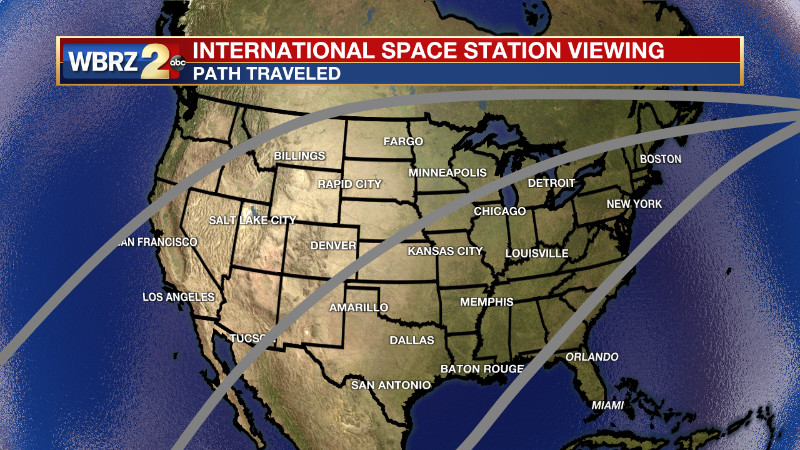Happenings in space for October
Keep your eyes on the skies, some cool things will be visible from the WBRZ viewing area. Some things are harder to see than others, but be sure you send us your photos—if you snap any—to weather@wbrz.com.
Oct 20: ISS Sighting
Time is limited with this sighting. The best viewing time will start from 5:55 am to 6:05 am. The magnitude of this sighting is -4.2 which will be extremely hard to see with the naked eye. Your best chance to catch a sighting would be with binoculars or a telescope.
Oct 21/22: The Orionid Meteor Shower
The meteor shower will peak overnight on Oct. 21 into the early morning hours of the 22. At its peaks, up to 20 meteors per hour will be visible. The meteor shower is from the comet Halley and can be found if you look towards the Orion constellation in the night sky.
Oct 22: ISS Sighting
Time is limited with this sighting. The best viewing time will start at 6:00 am and only last for 3 minutes. A viewing will only be possible with a telescope or binoculars due to the low magnitude.
Trending News
Oct 25: Partial Solar Eclipse
Not for the WBRZ viewing area but still some cool happening.
Oct 25: New Moon
Starlink Satellites
Can be seen randomly but all of the time. Starlink satellites were first put in orbit in 2019. The goal of the strand is to provide internet and global phone service by 2023. Hundreds of these satellites are launched into orbit currently and can be spotted as a string of light moving through space.
The International Space Station travels at 4.76 miles per second in its orbit around the Earth. The ISS orbits Earth in 90 minutes making 16 orbits a day.

The space station travels along a sine wave but the US is within the path and sometimes catches a glimpse of the ISS. The two chances that we have for this month have good range, meaning the satellite will be traveling near enough to the area to see it overhead.
The magnitude of the ISS is the problem. With magnitudes of less than -4.0, you will need some assistance viewing, like binoculars or a telescope.
Keep in mind both views are only for about 5 minutes each.


